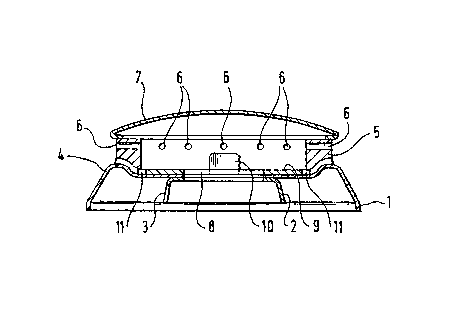Some of the information on this Web page has been provided by external sources. The Government of Canada is not responsible for the accuracy, reliability or currency of the information supplied by external sources. Users wishing to rely upon this information should consult directly with the source of the information. Content provided by external sources is not subject to official languages, privacy and accessibility requirements.
Any discrepancies in the text and image of the Claims and Abstract are due to differing posting times. Text of the Claims and Abstract are posted:
| (12) Patent: | (11) CA 1289052 |
|---|---|
| (21) Application Number: | 1289052 |
| (54) English Title: | GAS HOTPLATE BURNERS |
| (54) French Title: | PLAQUES CHAUFFANTES A BRULEURS AU GAZ |
| Status: | Expired and beyond the Period of Reversal |
| (51) International Patent Classification (IPC): |
|
|---|---|
| (72) Inventors : |
|
| (73) Owners : |
|
| (71) Applicants : |
|
| (74) Agent: | MALCOLM JOHNSTON & ASSOCIATES |
| (74) Associate agent: | |
| (45) Issued: | 1991-09-17 |
| (22) Filed Date: | 1988-09-16 |
| Availability of licence: | N/A |
| Dedicated to the Public: | N/A |
| (25) Language of filing: | English |
| Patent Cooperation Treaty (PCT): | No |
|---|
| (30) Application Priority Data: | |||||||||
|---|---|---|---|---|---|---|---|---|---|
|
ABSTRACT (Figure 1)
A gas burner comprises a burner skirt 1 supporting
a burner head 5 provided with combustion ports 6. A
plate 9 notched at the edges allows part of the
combustion mixture to escape round the bottom of the
burner head and burn to form a retention flame below the
main combustion ports 6. The flow of gas to the
retention flame is metered by metering apertures formed
by the bottom of the burner head and the notches in the
plate 9.
This construction allows the skirt to be made
simply and inexpensively from materials such as mild
steel, and to be vitreous enamelled, without sacrificing
accuracy of metering of the supply to the retention
flame.
Note: Claims are shown in the official language in which they were submitted.
Note: Descriptions are shown in the official language in which they were submitted.

2024-08-01:As part of the Next Generation Patents (NGP) transition, the Canadian Patents Database (CPD) now contains a more detailed Event History, which replicates the Event Log of our new back-office solution.
Please note that "Inactive:" events refers to events no longer in use in our new back-office solution.
For a clearer understanding of the status of the application/patent presented on this page, the site Disclaimer , as well as the definitions for Patent , Event History , Maintenance Fee and Payment History should be consulted.
| Description | Date |
|---|---|
| Inactive: Adhoc Request Documented | 1994-09-17 |
| Time Limit for Reversal Expired | 1994-03-19 |
| Letter Sent | 1993-09-17 |
| Grant by Issuance | 1991-09-17 |
There is no abandonment history.
Note: Records showing the ownership history in alphabetical order.
| Current Owners on Record |
|---|
| PARKINSON COWAN LTD. |
| Past Owners on Record |
|---|
| DAVID W. HOMER |